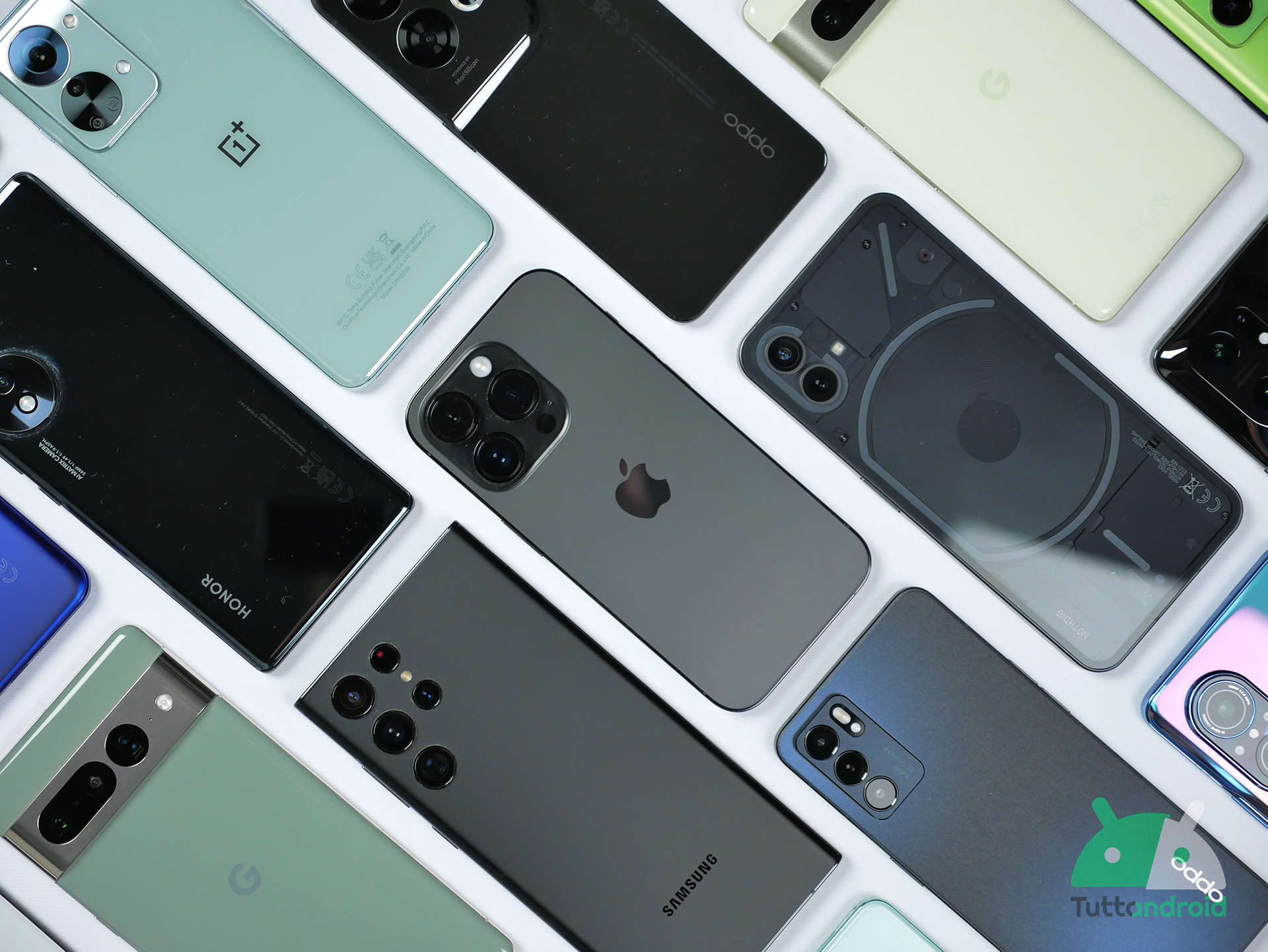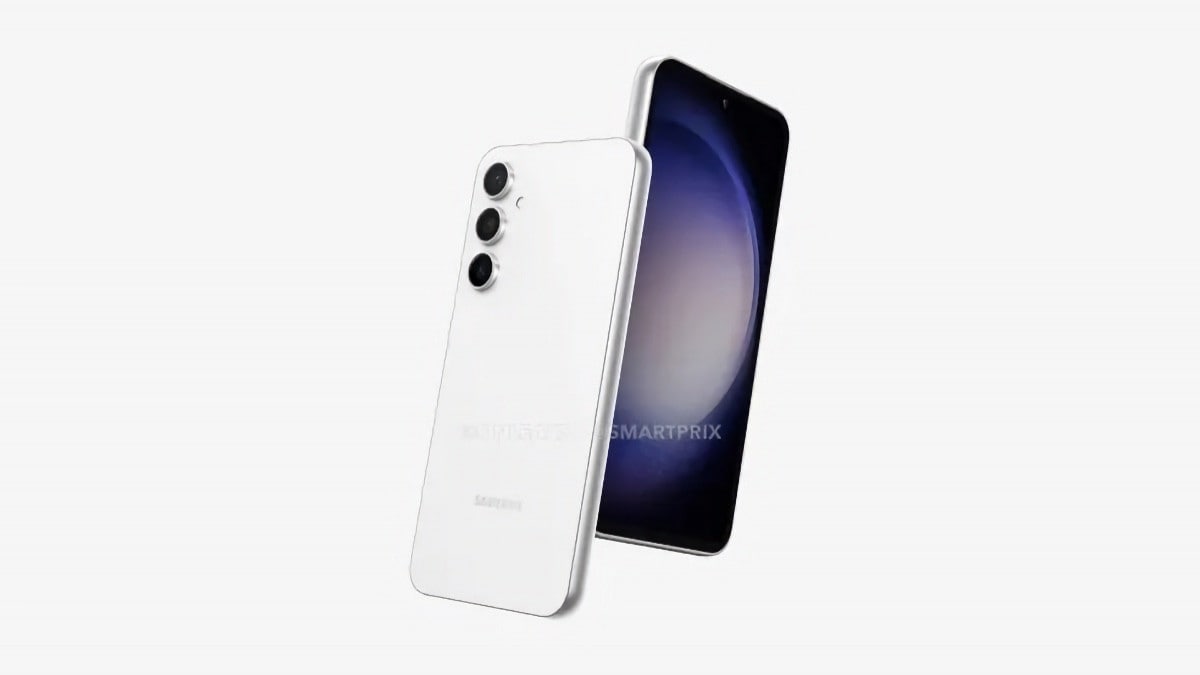The YouTube channel TechDroider recently published the classic video comparison with five smartphones from different manufacturers, Nothing Phone (2), iPhone 14 Pro MaxOnePlus 11, Xiaomi 13 Pro and Google Pixel 7 Pro.
The final objective of the video, created to highlight the potential of Nothing’s latest addition, is to review it Which of these smartphones have the greater autonomy when subjected to a standard duty cycle. So let’s look at the results and try to summarize: does such a comparison really make sense?
Nothing Phone (2) against everyone in a “test” of autonomy
Take five smartphones that were released between late 2022 and mid-2023. Place them side by side with a 100% charged battery. You start a timer and mostly start with the same things Social browsing and playing video contenton all five smartphones, all equipped with Full HD+ resolution displays in order not to create differences (except for the iPhone, which does not support resolution switching).
For better or for worse, this is the plot of a video recently published by the YouTube channel TechDroiderwhose main purpose was to highlight the potential of the Nothing phone (2) compared to other competitors.
Below, before watching the video, we summarize the main SoC, display and battery specifications of the five protagonists of the challenge:
- Nothing phone (2)
- Advertisement: OLED LTPO out of 6.7″ FHD+ up to 120Hz
- SoCs: Qualcomm Snapdragon 8+ Gen 1 (4nm)
- Drums: 4700mAh
- Apple iPhone 14 Pro Max
- Advertisement: Super Retina OLED XDR ProMotion out of 6.7″ (1290 x 2796 pixels) up to 120Hz
- SoCs: Apple A16 Bionic (4nm)
- Drums: 4323mAh
- One Plus 11
- Advertisement: LTPO3 liquid AMOLED out of 6.7″ QHD+ up to 120Hz
- SoCs: Qualcomm Snapdragon 8 Gen 2 (4nm)
- Drums: 5000mAh
- Xiaomi 13 Pro
- Advertisement: LTPO AMOLED out of 6.73″ QHD+ up to 120Hz
- SoCs: Qualcomm Snapdragon 8 Gen 2 (4nm)
- Drums: 4820mAh
- Google Pixel 7 Pro
- Advertisement: LTPO AMOLED out of 6.7″ QHD+ up to 120Hz
- SoCs: Google Tensor G2 (5nm)
- Drums: 5000mAh
What can we deduce from the video?
The first “deceased” of this survival test is the Xiaomi 13 Pro: despite SoC Snapdragon 8 Gen 2 (which has proven to be very handsome and concrete with other devices) from Qualcomm, the Xiaomi smartphone shows itself after approx 5 hours and 40 minutesprobably a victim of MIUI’s poor optimization (and lo and behold). YouTuber recorded a temperature of 45.5°C on the device when switched off).
The second to give way is him Google Pixel 7 Pro: the smartphone with the worst SoC among the five protagonists of the challenge, or something like that Google Tensor G2 made in 5nm (the others all have a 4nm SoC), starting from an unfortunate base (a not very successful Exynos SoC). However, the Google-branded device resisted 8 hours and 47 minutes and reached a maximum temperature of 40.5 °C (not bad considering the complaints of many users in the community who refer to the newer pixels as ovens).
In the middle of the ranking we find One Plus 11 which, with the same SoC with that Xiaomi 13 Prolasted much longer and turned itself off after almost a year 9 hours and 50 minutes (registered temperature corresponds to 44.7°C). The OnePlus software development team (pronounced OPPO) has done a good job of optimizing OxygenOS 13.1, at least compared to the other Chinese Xiaomi.
Nothing phone (2)strong of him Snapdragon 8+ Gen 1, one of the most successful SoCs in Qualcomm’s history, born from the ashes of the Snapdragon 8 Gen 1 (made by Samsung) thanks to the goodness of TSMC’s 4nm production process. The software developers at Nothing undoubtedly did a good job on the device interface, but a large part of the credit goes to the SoC. Nothing phone (2) after that it turned off 10 hours and 25 minutesReaching the temperature of 46°C.
The winner of the challenge is of course theiPhone 14 Pro Max From Apple what happened after that 11 hours and 13 minutesReaching the temperature of 42.5°C. Minus the excellent work the Cupertino giant (and TSMC) did on the SoC Apple A16 Bionicknown to iPhones (especially the Pro Max models) have a greater autonomy than their competitors on the Android scene (especially if they are somewhat on the budget segment, as in this case).
Does such a comparison really make sense?
Personally, I would have put the iPhone aside to see one of the Samsung Galaxy S23s in play: thanks to the Snapdragon 8 Gen 2the latest Samsung flagships blow for the considerable autonomy available to users, even considering how complete and complex the One UI is (especially on the animation side).
Anyway, Nothing phone (2) It doesn’t get away with broken legs from this “comparison”, but that’s not surprising: in the end, the device fully lived up to yesterday’s forecasts, giving it a “strong” autonomy thanks to a better tested (and optimized) SoC than the more recent models.
In conclusion, I would like to say one more thing: A test structured in this way will not be confirmed anywhere; Each of us uses the smartphone in our own way and therefore there may be a usage pattern that best fits one pattern or another. Then lo and behold, the software also does a lot (resource management, general optimization). That could be a challenge an end in itself.
Do not get lost: Nothing Phone Review (2) | OnePlus 11 Review | Xiaomi 13 Pro Review | Review of the Google Pixel 7 Pro



